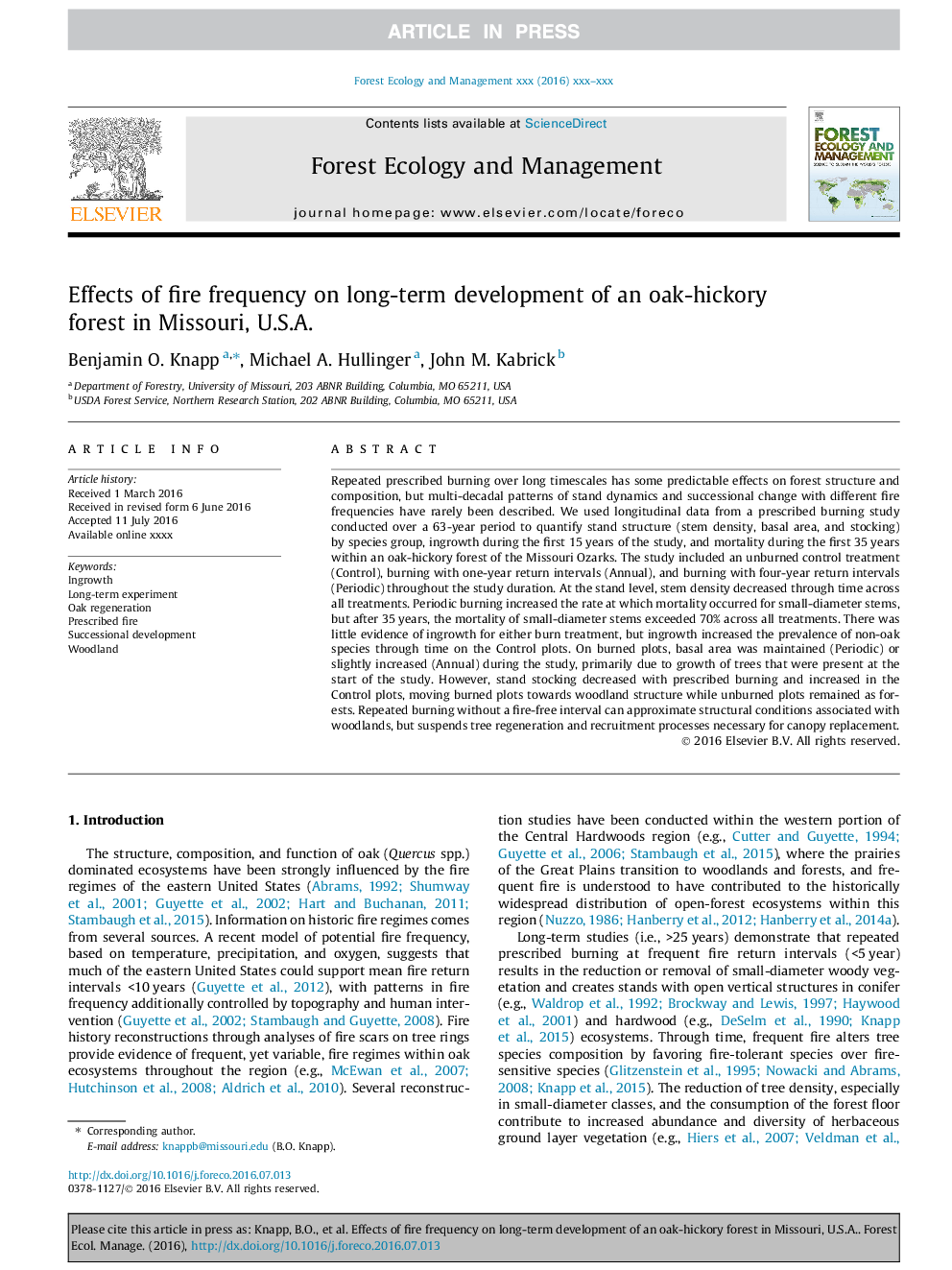| Article ID | Journal | Published Year | Pages | File Type |
|---|---|---|---|---|
| 4759545 | Forest Ecology and Management | 2017 | 11 Pages |
Abstract
Repeated prescribed burning over long timescales has some predictable effects on forest structure and composition, but multi-decadal patterns of stand dynamics and successional change with different fire frequencies have rarely been described. We used longitudinal data from a prescribed burning study conducted over a 63-year period to quantify stand structure (stem density, basal area, and stocking) by species group, ingrowth during the first 15Â years of the study, and mortality during the first 35Â years within an oak-hickory forest of the Missouri Ozarks. The study included an unburned control treatment (Control), burning with one-year return intervals (Annual), and burning with four-year return intervals (Periodic) throughout the study duration. At the stand level, stem density decreased through time across all treatments. Periodic burning increased the rate at which mortality occurred for small-diameter stems, but after 35Â years, the mortality of small-diameter stems exceeded 70% across all treatments. There was little evidence of ingrowth for either burn treatment, but ingrowth increased the prevalence of non-oak species through time on the Control plots. On burned plots, basal area was maintained (Periodic) or slightly increased (Annual) during the study, primarily due to growth of trees that were present at the start of the study. However, stand stocking decreased with prescribed burning and increased in the Control plots, moving burned plots towards woodland structure while unburned plots remained as forests. Repeated burning without a fire-free interval can approximate structural conditions associated with woodlands, but suspends tree regeneration and recruitment processes necessary for canopy replacement.
Related Topics
Life Sciences
Agricultural and Biological Sciences
Ecology, Evolution, Behavior and Systematics
Authors
Benjamin O. Knapp, Michael A. Hullinger, John M. Kabrick,
